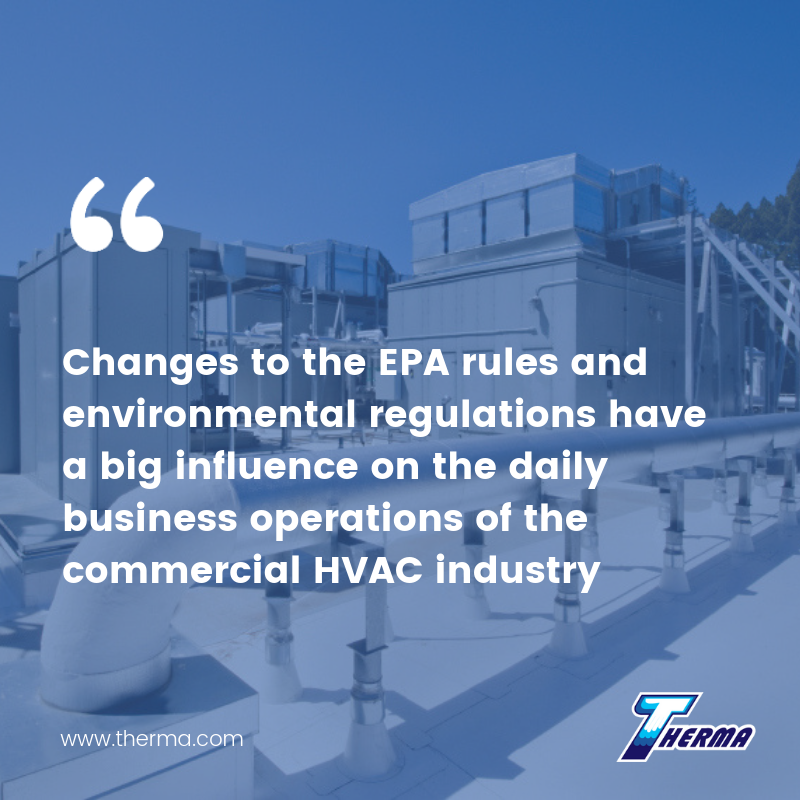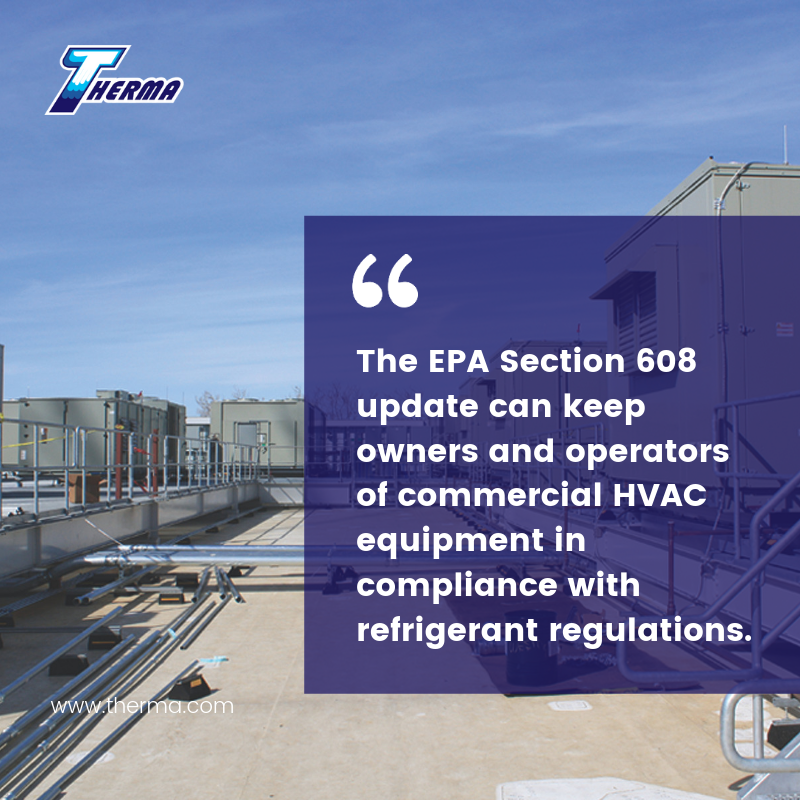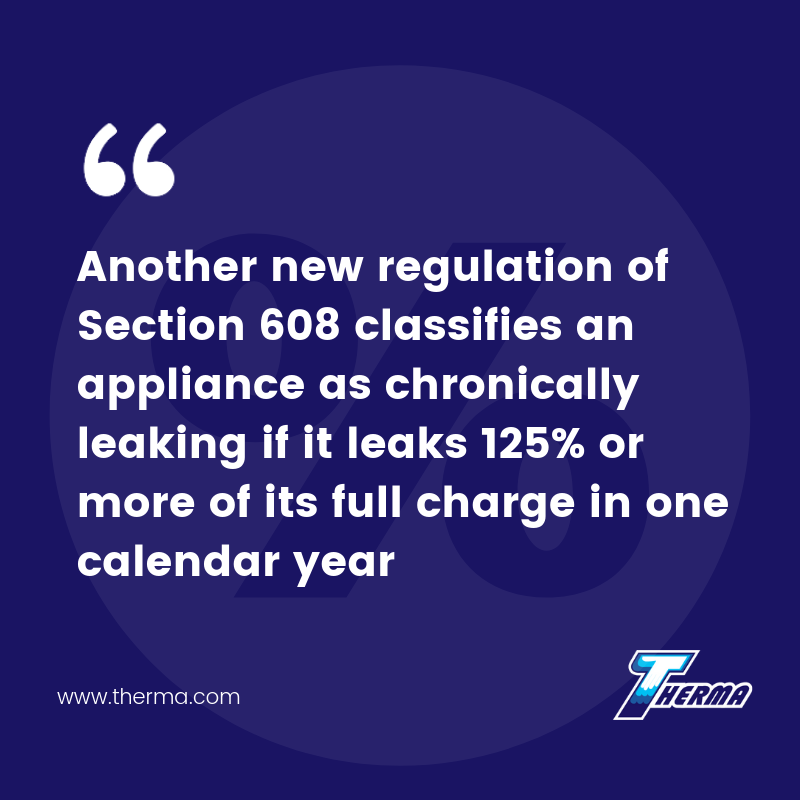As heating, venting and air-conditioning technology advances, so does the requirement to use equipment that is environmentally friendly, environmentally safe and energy-efficient. Changes to the EPA rules and environmental regulations have a big influence on the daily business operations of the commercial HVAC industry. Technicians, facility managers and others servicing air conditioning equipment containing refrigerants must observe certain practices.

Section 608 of the Clean Air Act establishes rules for regulating and reducing ozone-depleting substances such as chlorofluorohydrocarbons, or CFCs, used in air-conditioning and refrigeration equipment. The EPA Section 608 refrigerant regulations extended the requirements to include substitutes, such as hydrofluorocarbons, or HFCs.
The new EPA refrigerant regulations have already gone into effect, with staggered compliance dates effective January 1, 2018 and January 1, 2019.
Certification
Section 608 expanded refrigerant management regulations require safer handling practices for certified HVAC technicians, commercial HVAC facility managers and others. Certification and environmental regulations are part of HVAC technicians’ jobs, and the 2018 compliance date brought new HFC rules for technician certifications. These included HFC sales restrictions to certified technicians, HFC questions on Section 608 certification exams and HFC-certified evacuation equipment.
EPA 608 also sets rules containing specific requirements for handling leak repairs and simplifying compliance.
Leak Repairs
In 2019, the EPA lowered the leak-rate thresholds that trigger when leak repairs are performed on air conditioning equipment containing 50 or more pounds of refrigerant. In addition, owners and operators of equipment are responsible for conducting leak-rate calculations to determine if an equipment leak rate is above the leak-rate threshold.
Therefore, an EPA certified technician must repair refrigerant leaks that exceed the lower threshold of 20% (previously 35%) for commercial refrigeration, 30% (previously 35%) for industrial process refrigeration, and 10% (previously 15%) for comfort cooling. Once the leak rate exceeds the leak-rate threshold, bringing it below the threshold leads to mandatory verification testing and leak inspections which can help to simplify leak-repair compliance.
Simplify Compliance
The EPA Section 608 update can keep owners and operators of commercial HVAC equipment in compliance with refrigerant regulations. The updated regulations include new verification tests to demonstrate that leaks are successfully repaired. They also include periodic leak inspections according to a schedule set by the EPA for air conditioning equipment that has surpassed the leak-rate threshold.

Initial and follow-up verification tests on equipment repairs are mandatory. If either test is unsuccessful, a 30-day repair deadline with limited extensions is given.
In most conditions, excepting equipment with continuous monitoring devices, these inspections are conducted:
- Annual inspections, for systems containing 50 to 500 pounds of refrigerant until the leak rate has not exceeded the mandated thresholds for one year.
- Annual inspections, for comfort cooling equipment containing 50 or more pounds of refrigerant until the leak rate has not exceeded the threshold for one year.
- Quarterly inspections for equipment containing over 500 pounds of refrigerant until the leak rate has not exceeded the thresholds for four consecutive quarters.
If the leak rate fails to fall below the threshold, the EPA requires either:
- The creation and implementation of a retrofit plan if using a different refrigerant
- The conversion of equipment to be compatible with a different refrigerant
- A retirement plan for disposing of the equipment
In addition, other EPA changes to simplify compliance monitors procedures by maintaining related records and reports to show when service or maintenance is performed. HVAC technicians and facilities managers must keep and provide records on equipment servicing, refrigerants added or removed, leak inspections, verification tests, retrofit and retirement plans and the new chronically leaking appliances report.
Chronically Leaking Appliances
Another new regulation of Section 608 classifies an appliance as chronically leaking if it leaks 125% or more of its full charge in one calendar year. In this case, the EPA requires the submission of a report describing attempts to identify leaks and repairs of chronically leaking equipment containing 50 or more pounds of refrigerant.
Regulation to Watch in 2019
The HVAC industry could further be impacted in 2019 by a reuglation that reverts to requirement regarding leak repair and maintenance of ozone-depleting substances equipment and rescinds previous rules regarding leak repair and maintenance of substitute refrigerant (e.g. HFCs) equipment. Therefore, if the Revisions to the Refrigerant Management Program’s Extension to Substitutes is finalized, no more leak rate calculation when adding refrigerants, appliance repair triggers, verification tests, leak inspections or maintaining service records for HFC refrigerants. As a result, HVAC technicians would not have to prevent leaks during the maintenance and repair of HFC appliances.
EPA rules and environmental regulations are designed to strengthen proper management practices and at the same time can extend equipment life, improve system performance, improve knowledge about maintenance and save money on energy.
Sources:
- https://www.epa.gov/sites/production/files/2016-09/documents/608_fact_sheet_supermarkets_property_managers_0.pdf
- https://www.epa.gov/section608/revised-section-608-refrigerant-management-regulations
- https://www.epa.gov/sites/production/files/2016-09/documents/608_fact_sheet_technicians_0.pdf
- https://www.hvacschool.org/epa-and-the-hvac-industry/
- https://www.refrigerationschool.com/blog/industry-news/2-hvac-r-industry-regulations-to-watch-in-2019/
- https://news.trakref.com/new-epa-regulations-on-refrigerant-leaks-take-effect-in-2019
- https://blog.mybacharach.com/articles/new-epa-refrigerant-regulations-for-2019/
- https://www.nuvolo.com/resources/epa-608-changes-what-you-need-to-know-for-2019








